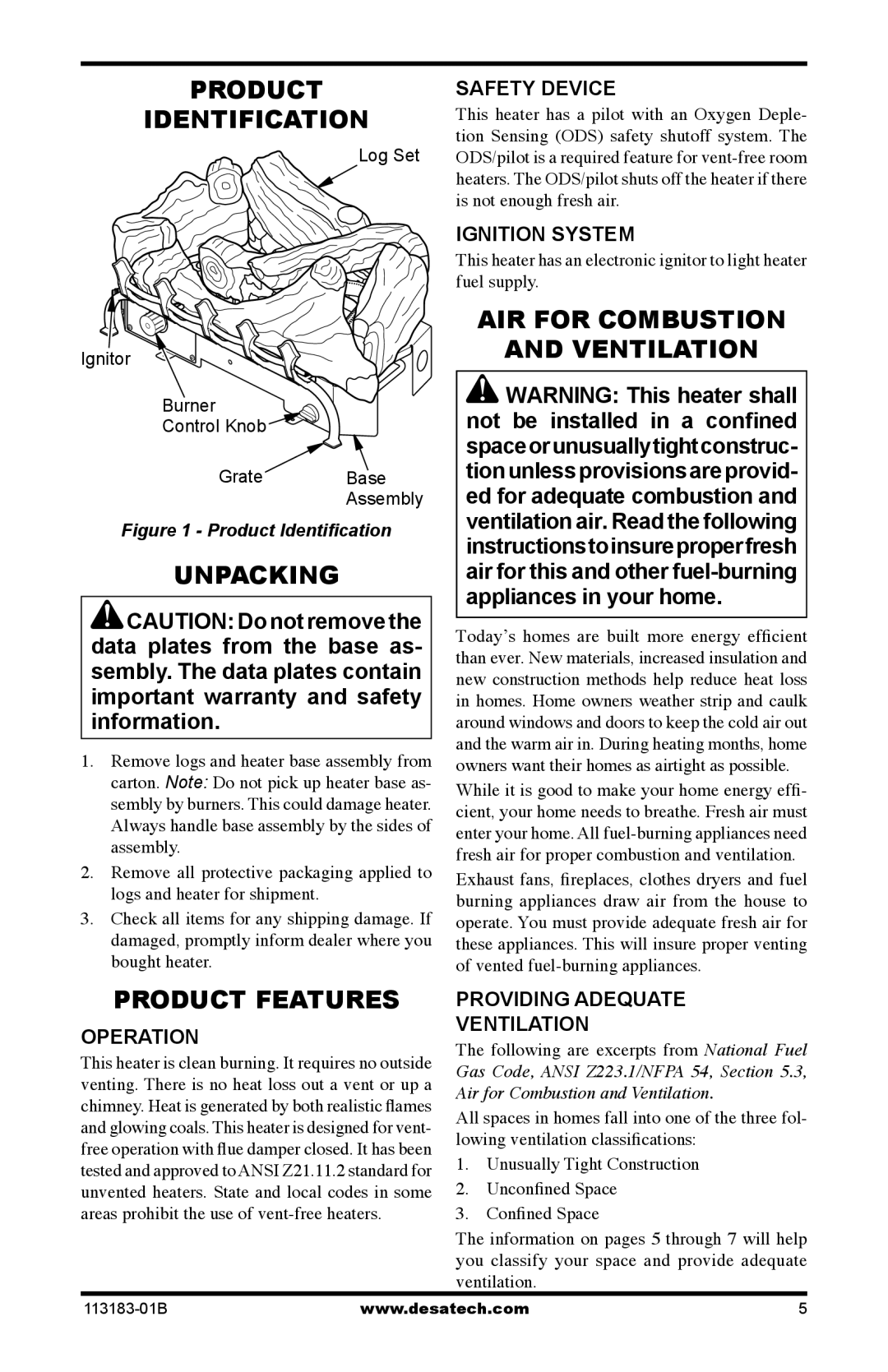
PRODUCT
IDENTIFICATION
Log Set
Ignitor |
|
Burner |
|
Control Knob |
|
Grate | Base |
| |
| Assembly |
Figure 1 - Product Identification | |
UNPACKING |
|
CAUTION: Do not remove the | |
data plates from the base as- | |
sembly. The data plates contain | |
important warranty and safety | |
information. |
|
1.Remove logs and heater base assembly from carton. Note: Do not pick up heater base as- sembly by burners. This could damage heater. Always handle base assembly by the sides of assembly.
2.Remove all protective packaging applied to logs and heater for shipment.
3.Check all items for any shipping damage. If damaged, promptly inform dealer where you bought heater.
PRODUCT FEATURES
OPERATION
This heater is clean burning. It requires no outside venting. There is no heat loss out a vent or up a chimney. Heat is generated by both realistic flames and glowing coals. This heater is designed for vent- free operation with flue damper closed. It has been tested and approved to ANSI Z21.11.2 standard for unvented heaters. State and local codes in some areas prohibit the use of
SAFETY DEVICE
This heater has a pilot with an Oxygen Deple- tion Sensing (ODS) safety shutoff system. The ODS/pilot is a required feature for
IGNITION SYSTEM
This heater has an electronic ignitor to light heater fuel supply.
AIR FOR COMBUSTION AND VENTILATION
![]() WARNING: This heater shall not be installed in a confined spaceorunusuallytightconstruc- tionunlessprovisionsareprovid- ed for adequate combustion and ventilation air. Read the following instructionstoinsureproperfresh air for this and other
WARNING: This heater shall not be installed in a confined spaceorunusuallytightconstruc- tionunlessprovisionsareprovid- ed for adequate combustion and ventilation air. Read the following instructionstoinsureproperfresh air for this and other
Todayʼs homes are built more energy efficient than ever. New materials, increased insulation and new construction methods help reduce heat loss in homes. Home owners weather strip and caulk around windows and doors to keep the cold air out and the warm air in. During heating months, home owners want their homes as airtight as possible.
While it is good to make your home energy effi- cient, your home needs to breathe. Fresh air must enter your home. All
Exhaust fans, fireplaces, clothes dryers and fuel burning appliances draw air from the house to operate. You must provide adequate fresh air for these appliances. This will insure proper venting of vented
PROVIDING ADEQUATE
VENTILATION
The following are excerpts from National Fuel Gas Code, ANSI Z223.1/NFPA 54, Section 5.3, Air for Combustion and Ventilation.
All spaces in homes fall into one of the three fol- lowing ventilation classifications:
1.Unusually Tight Construction
2.Unconfined Space
3.Confined Space
The information on pages 5 through 7 will help you classify your space and provide adequate ventilation.
www.desatech.com | 5 |
